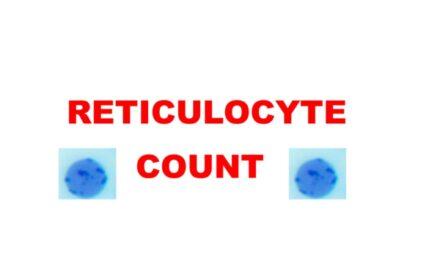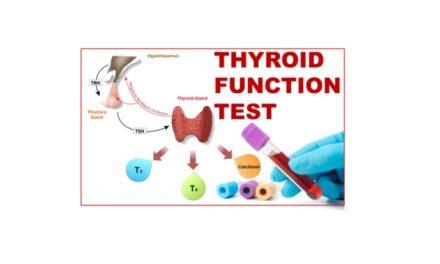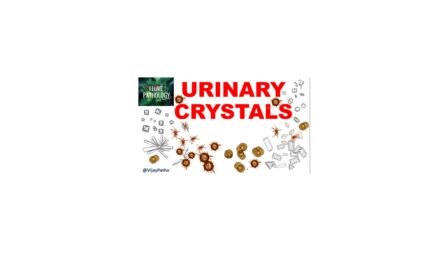26. What is the composition of qualitative benedicts reagent?
Copper sulphate, sodium carbonate, sodium citrate and distilled water.
27. What is alimentary glycosuria?
Also called as lag storage glycosuria. After a meal, there is rapid intestinal absorption of glucose leading to transient elevation of blood glucose above renal threshold. This can occur in persons with gastrectomy or gastrojejunostomy and in hyperthyroidism. Fasting and 2 hours’ glucose will be normal.
28. Name disease win which sugar, protein ad ketone bodies are present in urine?
Diabetes mellitus with nodular glomerulosclerosis results in nephrotic syndrome. Uncontrolled diabetes mellitus leads to ketoacidosis and ketonuria in addition.
29. What are the nondiabetic causes of hyperglycemia?
a. Cushing’s syndrome
b. Hyperthyroidism
c. Pheachromocytoma
d. Pancreatic cancer
e. Acromegaly.
b. Hyperthyroidism
c. Pheachromocytoma
d. Pancreatic cancer
e. Acromegaly.
30. Name the three “ketone bodies” appearing in urine and three causes of ketonuria.
The three ketone bodies are Acetone, acetoacetic acid and beta hydroxyl butyric acid.
The causes of ketonuria are as under
a. Diabetic ketoacidosis
b. Starvation and vomiting
c. Strenuous exercise
d. Malabsorption.
The causes of ketonuria are as under
a. Diabetic ketoacidosis
b. Starvation and vomiting
c. Strenuous exercise
d. Malabsorption.
31. In a positive Ehrlich’s aldehyde test for urobilinogen, how can it be differentiated from phosphobilinogen?
Urobilinogen is extracted in chloroform (after adding saturated solution of sodium acetate- pink color) while phorphobilinogen cannot be extracted in chloroform – Watson Schwartz test.
32. What leads to presence of bilirubin in urine?
Only conjugated urine is excreted by kidney. Therefore, it is detected in obstructive jaundice and hepatocellular jaundice.
33. What is the color of urine in hemoglobinuria and why?
Urine is usually dark brown because of the conversion of hemoglobin to acid hematin ( in acidic urine). Very dark color resembles cola color
34. What is microscopic or hidden hematuria
Presence of three or more number of red cells per high power field on microscopic examination in two out of three properly collected samples. No macroscopic or gross hematuria.
35. What is the difference between hematuria and hemoglobinuria?
| Hematuria | Hemoglobinuria | |
| Definition | Presence of abnormal number of intact red cells in urine | Presence of free hemoglobin in urine |
| Urine color | Normal, smoky, red or brown | Pink, red or brown |
| Plasma color | Normal | Pink |
| Urine test on peroxidase activity | Positive | Positive |
| Urine microscopy | Many red cells | Occasional red cell |
| Serum haptoglobin | Normal | Low |
| Serum creatinine kinase | Normal | Normal |
| causes | Glomerulonephritis , lupus nephritis, Henoch schonlein purpura, calculi, tumors etc. | Intravascular hemolysis like Paroxysmal nocturnal hemoglobinuria, Paroxysmal cole hemogobinuria, incompatible blood transfusion. |
36. What are the precautions we should keep in mind when we use reagent strips?
a.Protect reagent strips from moisture and excessive heat to prevent loss of sensitivity
b.Brownish discoloration indicate significant loss of reactivity hence should not be used.
c.Store strips in a cool, dry area but not in refrigerator
d.Remove only enough reagent strips for immediate use and recap the bottle immediately
e.Avoid contamination of reagent strips
f.Do not touch the areas with fingers
g.Do not lay reagent strip on table surface- use clean sheet of paper
h.Do not use strips in the presence of volatile acids or alkaline fumes
i.Properly moisten reagent strips in a well mixed urine when testing the specimen
j.Avoid incomplete dipping, all test areas must be completely moistened
k.Avoid prolonged dipping, excessive dipping may cause bleaching of test reagents
l.Excessive care in reading strip. Observe time elements indicated in the directions for their use
m.Hold the reagent strip close to appropriate color chart when reading
n.Read only under good lighting condition.
b.Brownish discoloration indicate significant loss of reactivity hence should not be used.
c.Store strips in a cool, dry area but not in refrigerator
d.Remove only enough reagent strips for immediate use and recap the bottle immediately
e.Avoid contamination of reagent strips
f.Do not touch the areas with fingers
g.Do not lay reagent strip on table surface- use clean sheet of paper
h.Do not use strips in the presence of volatile acids or alkaline fumes
i.Properly moisten reagent strips in a well mixed urine when testing the specimen
j.Avoid incomplete dipping, all test areas must be completely moistened
k.Avoid prolonged dipping, excessive dipping may cause bleaching of test reagents
l.Excessive care in reading strip. Observe time elements indicated in the directions for their use
m.Hold the reagent strip close to appropriate color chart when reading
n.Read only under good lighting condition.
37. How to prepare urine sediment for microscopic examination?
Well mixed sample of urine (12 ml) is centrifuged in a centrifuge tube for 5 min at 1500rpm and supernatant is poured off. The tube is tapped at the bottom to re suspend the sediment (in 0.5mlof urine). A drop of this is placed on glass slide and covered with cover slip. Slide is examined under microscope using first low power and then high power objective. The condenser should be lowered to better visualize the elements by reducing the illumination.
38. What are the normal values of red cells, epithelial cells and white cells in urine?
Red cells- nil
White cells- 2-3/high power field
Epithelial cells- 5-6 per high power field.
White cells- 2-3/high power field
Epithelial cells- 5-6 per high power field.
39. What does presence of dysmorphic cells signify?
Presence of >80% of dysmorphic cells signify glomerular pathology.
40. What are urinary casts?
These are the only elements unique to kidneys which are found in urinary sediments. They are usually formed in distal convoluted tubules and collecting ducts. The major constituent of casts is Tamm- Horsfall proteins. The presence of urinary casts is also called as cylindruria.
41. How to examine casts?
Casts are best seen un der low power objective (X10) with condenser lowered doen to reduce the illumination
42. What precautions should be observed while examining urine for casts
Casts are colorless. Tamm horsfall proteins are better observed when condenser of the microscope is low.
43. What information do the casts provide?
Presence of casts indicates disease of renal tubules which secrete a mucoprotein ( Tamm Horsfall protein ) that gets solidified , forming a cast, subtype of cast whether granular, red cell or epithelial type suggests the pathology of renal parenchyma. Only hyaline casts may b found in healthy persons after exercise.
44. Mention different types of casts and list the causes?
| Sl no | Casts | Constituent and appearance | causes |
| 1 | Hyaline | Almost exclusively of Tamm-Horsfall proteins They appear colorless and of varied appeareance |
Strenuous exercises Dehydration Stress Pathological as in all renal diseases |
| 2 | RBC | Suggests bleeding from nephron! They are more fragile, fragmented or irregular shape |
glomerulonephritis |
| 3 | WBC | Suggests infection or inflammation in the nephron. They are composed of neutrophils and they appear granular and have irregular borders. |
Pyelonephritis, acute interstitial nephritis |
| 4 | Epithelial | Difficult to differentiate from wbc , fragments of epithelium can be a clue. | Advanced tubular destruction |
| 5 | Fatty | Retractile and contain fat droplets or oval fat bodies. | Lipiduria due to nephritic syndrome, toxic tubular necrosis, crush injuries |
| 6 | Granular | Granular and of variable shapes. Originated from lysosomes of renal tubular epithelial cells | Strenuous exercise |
| 7 | waxy | Brittle and refractive, appear fragmented with jagged ends and can have notches in the sides | Extreme urine stasis and chronic renal failure |
| 8 | Broad | Broad/wider than normal | Same as above |
45. What is the significance of crystals in urine?
Type of crystals suggest excessive excretion of that substance in urine, and if associated with the stone in the urinary tract, suggests the possible type of stone. Moreover, crystals of uric acid/urates are excreted in gout; triple phosphates in UTI due to urea splitting organism making the urine alkaline.
46. Which crystals make the urine alkaline
Crystalline triple phosphate (calcium ammonium magnesium phosphate) with prism shaped crystals and amorphous phosphates render pH alkaline. The latter get dissolved on addition of dilute acetic acid, thus differentiating these from albuminuria in the heat test for proteins.
47. What is telescoped urinary sediment?
Refers to urinary sediment consisting of red blood cells, white blood cells, oval fat bodies and all types of casts in roughly equal proportion
Causes: lupus nephritis, malignant hypertension, rapidly progressive glomerulonephritis and diabetic glomerulosclerosis.
Causes: lupus nephritis, malignant hypertension, rapidly progressive glomerulonephritis and diabetic glomerulosclerosis.
48. What is significant bacteriuria?
Significant bacteriuria exists when there are
>105 bacterial colony forming units/ml of urine in a clean catch mid stream sample
>104 colony forming units /ml of urine in catheterized sample
>103 colony forming units /ml of urine in suprapubic aspiration sample.
>105 bacterial colony forming units/ml of urine in a clean catch mid stream sample
>104 colony forming units /ml of urine in catheterized sample
>103 colony forming units /ml of urine in suprapubic aspiration sample.
49. What are the organisms detectable in urine?
a.Bacteria
b.Yeasts
c.Trichomonas vaginalis
d.Eggs of Schistoma hematobium
e.Microfilariae.
b.Yeasts
c.Trichomonas vaginalis
d.Eggs of Schistoma hematobium
e.Microfilariae.
Pages: 1 2






